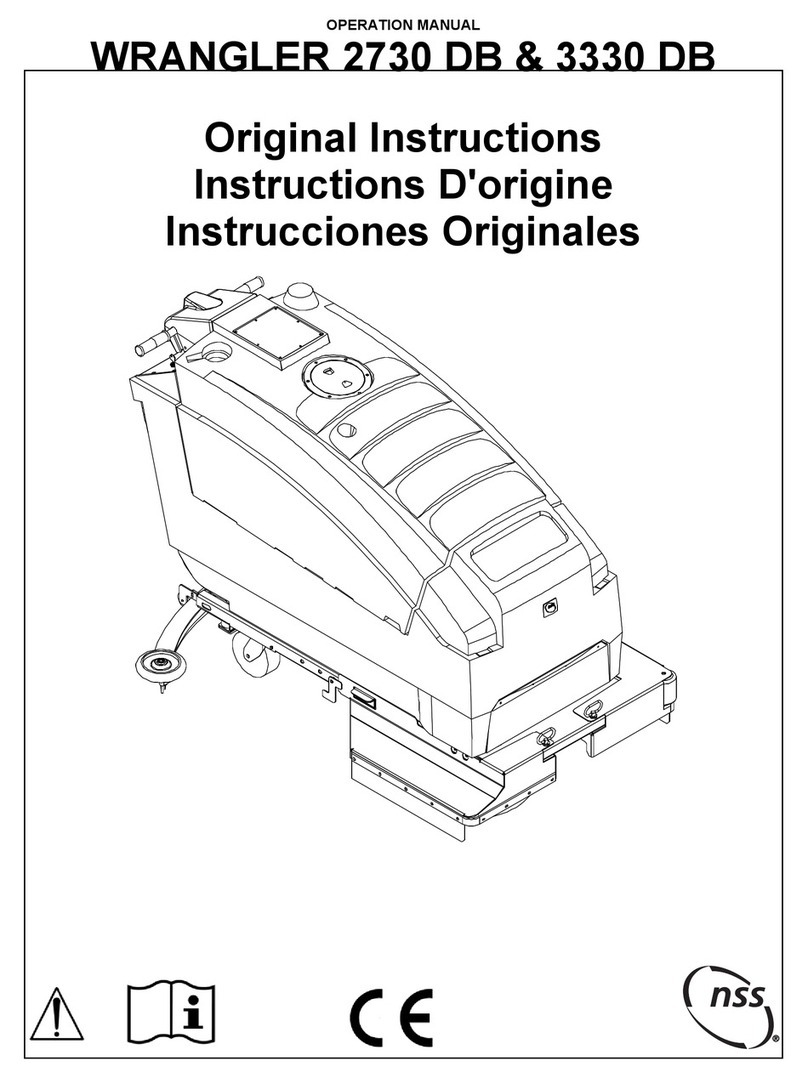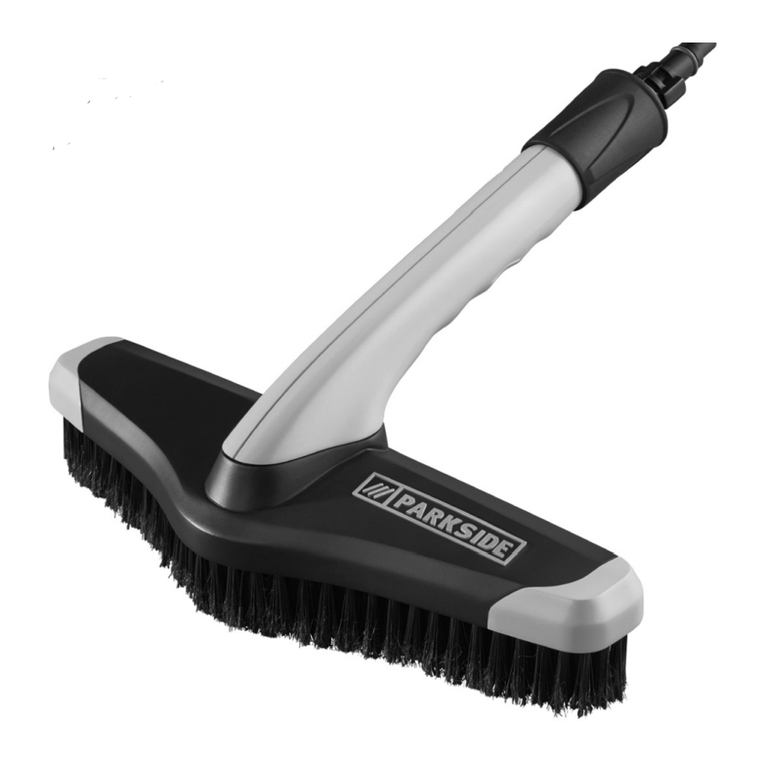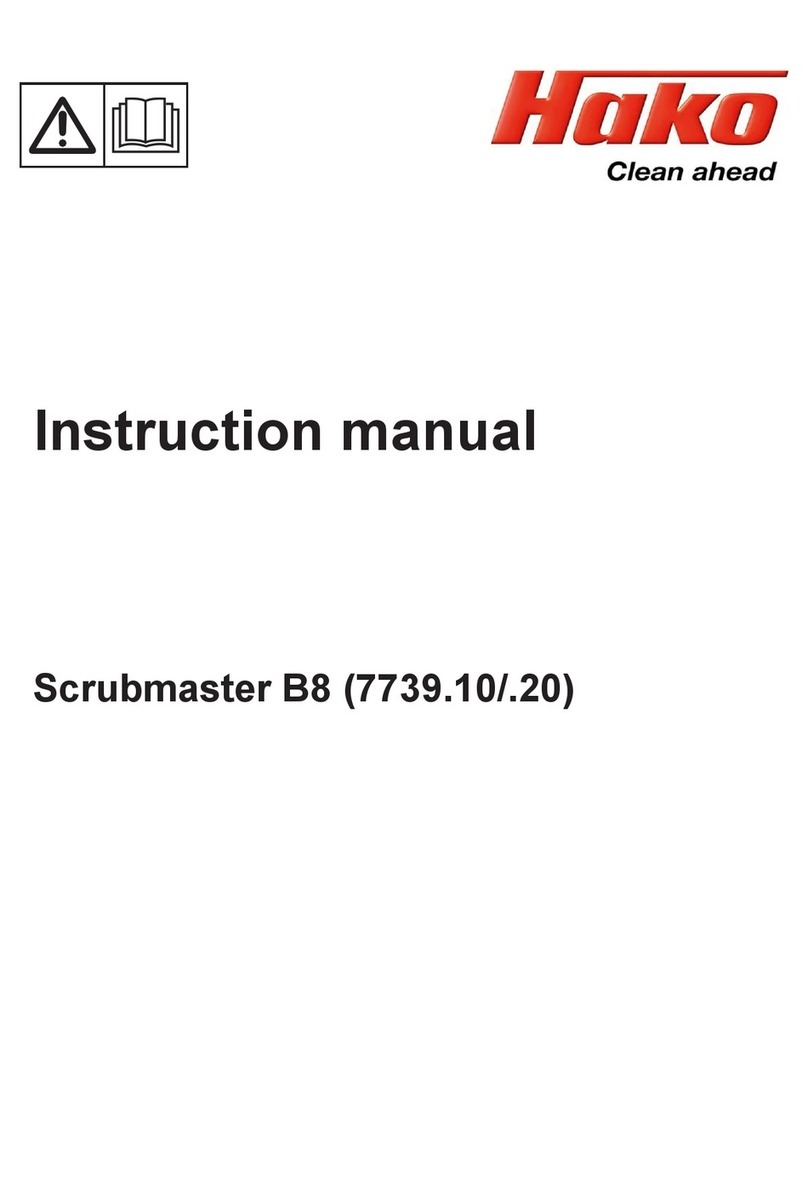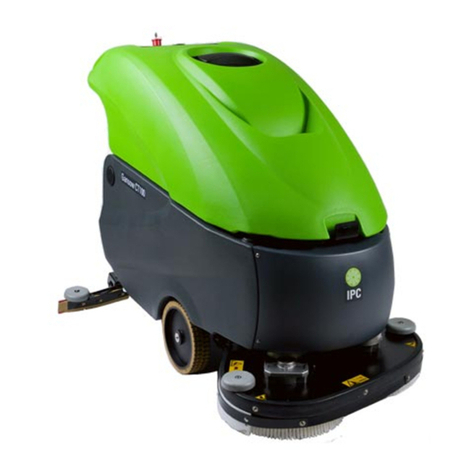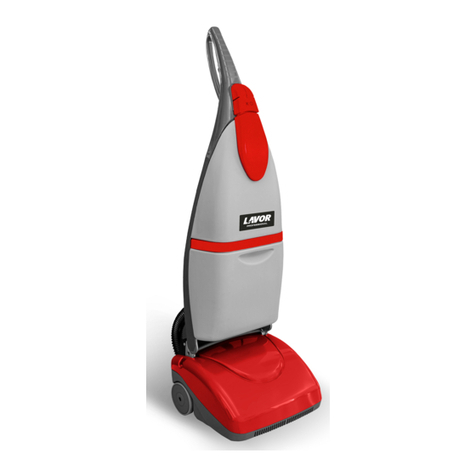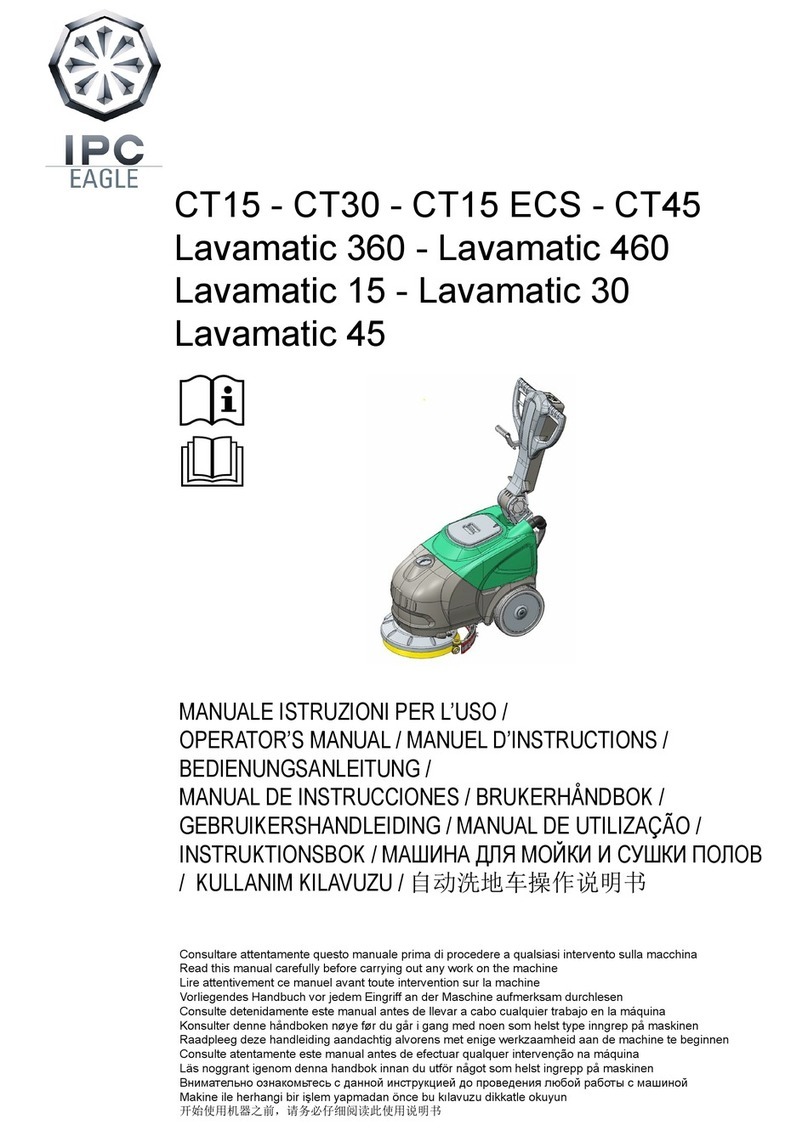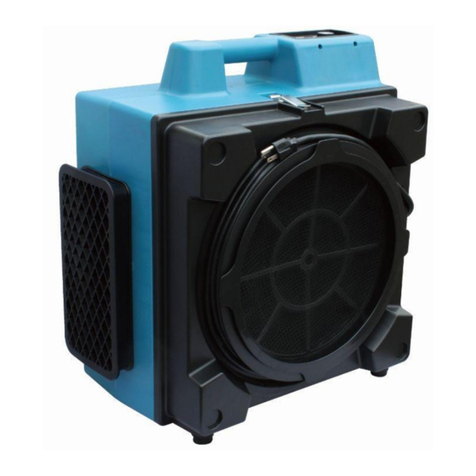NSS CHAMP 2417 RB User manual

CHAMP 2417 RB
CHAMP 2417 RB
NSS ® Enterprises, Inc.
3115 Frenchmens Road, Toledo, Ohio 43607
PHONE: (419) 531-2121 FAX: (419) 531-3761
USE AND MAINTENANCE MANUAL
USA
( Page 3 )
MANUAL DE USO Y MANTENIMIENTO
ESP
( Página 42 )
9097691 ORIG.10-18

2
NSS

3
CONTENTS PAGE
INTRODUCTION 5
• Purpose and contents of the manual 5
• Recipients 5
• Manual storage 5
• Declaration of conformity 5
• Identication data 5
• Other reference manuals 6
• Spare parts and maintenance 6
• Changes and improvements 6
• Operational capabilities 6
• Conventions 6
UNPACKING/DELIVERY 6
SAFETY 6
• Symbols used 7
• General instructions 7
MACHINE DESCRIPTION 9
• Machine construction 9
• Steering wheel with control panel and controls 10
• Safety functions 11
• Electromagnetic brake 11
• Drive safety micro-switch 11
• Emergency stop button 11
TECHNICAL FEATURES 12
ACCESSORIES AND COMPONENTS (UPON REQUEST) 13
WIRING DIAGRAM 14/15
(CODES) ALARM DISPLAY 16
PUSHING/TOWING THE MACHINE 17
BATTERIES 18
• Checking/installing batteries on a new machine 18
• Installing/replacing the batteries 18
• Setting the type of batteries installed 18
• Accesing the battery charger on board in case of settings 18
• Changing the set parameters of the charging curve with battery charger on board 19
• Dipswitches setting tables for battery charger“CBHD1 24V. - 13A USA CEC” 19
• Recharging of the batteries 20
PRELIMINARY OPERATIONS BEFORE STARTING THE MACHINE 20
ELECTROMAGNETIC BRAKE 20
BRUSHES 21
• Disc brushes 21
• Assembling/Disassembling the disc brush unit 21
• Replacing the disc brushes 21
• Choosing the disc brush type 21
• Abrasive disc drivers 22
• Disassembling/Assembling the unit and abrasive disc 22
• Replacing the abrasive discs 22
• Choosing the abrasive disc type based on the driver 22
• Replacing the protection rubbers on the brush base-plate 22
SQUEEGEE 23
• Disassembling/Assembling the squeegee 23
• Choosing the type of squeegee rubbers 23
• Installing/removing the squeegee rubbers 25

4
CONTENTS PAGE
TANKS 24
• Checking the recovery water tank 24
• Filling the detergent solution tank with water (or washing water) 24
• Standard inlet 24
• Inlet with lling kit (UPON REQUEST) 24
• Installing/Filling the 5-litre detergent tank (DETERSAVER upon request) 24
(Version with automatic detergent feeding system)
STARTING AND STOPPING THE MACHINE 25
• Starting the machine 25
• Stopping the machine 26
MACHINE IN OPERATION 26
• Adjustments and checks 26
EMPTYING THE TANKS 27
• Emptying the recovery water tank 27
• Emptying the detergent solution (or washing water) tank 28
• Emptying the 5-litre detergent tank (DETERSAVER - UPON REQUEST) 28
• Detergent solution (or washing water) tank level 28
• Recovery water tank level 28
AFTER USING THE MACHINE 29
MACHINE LONG DOWNTIME 29
FIRST PERIOD OF USE 30
MAINTENANCE 30
• Planned maintenance table 30
• Checking the machine operating hours 31
• Cleaning the squeegee 31
• Checking the squeegee rubbers 32
• Replacing the rear squeegee rubber 32
• Replacing the front squeegee rubber 32
• Resetting the squeegee 32
• Adjusting the squeegee 33
• Cleaning the disc brushes and the abrasive discs 33
• Cleaning the recovery tank 34
• Cleaning the suction lter 35
• Cleaning the detergent solution (or washing water) lter 35
• Opening/Closing the batteries holder case and disconnecting the battery connector 36
• Charging the batteries 37
• Charging the batteries using the charger on the machine 37
• Checking/Replacing the fuses 38
• Disassembling/assembling the vacuum motor 39
TROUBLESHOOTING 40
SCRAPPING 41

5
A
INTRODUCTION
Purpose and contents of the manual
The purpose of this Manual is to provide the operator with all necessary information to use the machine in the most
suitable, independent and safest way possible. It includes information on safety, technical aspect, operation, machine
stop, maintenance, spare parts and machine scrapping.
Before performing any operation on the machine, the operators and qualied technicians must carefully read the
instructions in this manual. If in doubt on correct interpretation of the instructions, contact the NSS Manufacturer for
any explanations.
Recipients
This manual is for both the machine operator and qualied maintenance technicians.
The operators must not perform operations reserved for qualied technicians. NSS is not liable for damages resulting
from failure to observe this prohibition.
Manual storage
This manual must be stored next to the machine, in the special bag, protected from liquids and anything else that may
jeopardise readability.
Declaration of conformity
The declaration of conformity supplied with the machine certies compliance of the machine with the provisions of
law in force.
NOTE:
The original CE declaration of conformity is included in the documentation attached to the machine.
Identication data
The machine serial number, model and year of manufacture are shown on label (A) axed to the frame. This informa-
tion is required when ordering spare parts or contacting the authorised service for assistance after a careful analysis
of the failures and their causes.
The following information must be provided when calling the service support:
• Operating hours
• Machine serial number
• Failure details
• Checks performed
• Adjustments performed and their eect
• Alarms displayed (in the event of electronic management)
• Any incorrect usage
• Any other relevant information

6
Other reference manuals
Electronic battery charger manual (to be considered integral part of this manual)
Spare part catalogue (provided with the machine)
Electromagnetic brake release instruction document. (See also “PUSHING/TOWING THE MACHINE” and “ELECTRO-
MAGNETIC BRAKE”.
Spare parts and maintenance
Contact qualied personnel or NSS Service Centres directly for any requirement regarding use, maintenance and
repairs. Only original spare parts and accessories should be used.
Contact NSS for assistance or to order spare parts and accessories, always specifying the model and serial number.
Changes and improvements
NSS focuses on constant improvement of its products and reserves the right to make changes and improvements
when deemed necessary, without having to modify the machines previously sold.
Any change and/or addition of accessories to the machine must be explicitly approved and implemented by NSS.
Operating capacity
This scrubber drier is designed and manufactured to clean (wash and dry) smooth and compact oors, in civil and
industrial environments, under veried safe conditions, and driven by a qualied operator.
The scrubber drier is not suitable for washing carpets and rugs.
Conventions
All forward, backward, front, rear, right, left indications in this manual refer to the operator sitting in the driving posi-
tion on the operator's seat.
UNPACKING/DELIVERY
Carefully follow the instructions on the packaging to unpack the Machine.
Refer to the Pushing/towing the machine section to manually push the machine.
When the machine is delivered, check that both the packaging and the machine have not been damaged during
transportation. In the event of clear signs of damage, keep the packaging and have it checked by the Courier that
delivered it. Immediately call the Courier to ll in a claim for damages.
Check that the following items have been supplied with the machine:
Technical Documentation:
• Scrubber drier instruction and maintenance manual.
• Electronic battery charger manual (if supplied).
• Scrubber drier spare part catalogue.
• Electromagnetic brake release instruction document.
SAFETY
The following symbols are used to warn of any potentially dangerous conditions. Always read this information care-
fully and take the necessary precautions to protect people and objects.
The operator’s help is essential to prevent injuries. No injury prevention plan is eective without the full cooperation
of the person directly responsible for machine operation. Most accidents occurring in a company, at the workplace or
during transfer, are caused by failure to observe the most basic safety rules.
A careful and cautious operator is the best guarantee against accidents and proves essential to complete any preven-
tion program.

7
ATTENTION!
In spite the water tanks are carefully cleaned during the assemblying and the end tests, some pla-
stic debris could be still found in the rst hours of operation.
Symbols used
!DANGER!
Indicates a danger with risk, even deadly, for the operator.
!ATTENTION!
Indicates a potential risk of injury for people or damage to objects.
!WARNING!
Indicates a warning or a note on key functions or on useful functions. Pay close attention to text sections
marked with this symbol.
NOTE!
Indicates a note on key functions or useful functions.
REFER TO MANUAL
Indicates the need to read the Instruction and maintenance manual before performing any operation.
General instructions
Specic warnings and messages are described below to highlight any potential risk of damage to people and the
machine.
!DANGER!
• Disconnect the battery using the special connector and remove the ignition key before performing any
maintenance, repair, and parts replacement procedures.
• This machine should be used by properly trained and authorised people only.
• Keep sparks, ames and incandescent materials away from batteries. Explosive gases leak during nor-
mal use of lead batteries (WET).
• Remove all jewellery when working near electrical components.
• Make sure that adequate safety xed mounts are in place when working under the machine in lifted
position.
• Do not operate this machine in environments with harmful, dangerous, ammable and/or explosive
dust, liquids or vapours. This machine is not suitable for collecting dangerous dust.
• Highly explosive hydrogen gas is produced when charging lead batteries (WET), therefore the operation
should be carried out only in well-ventilated areas and away from open ames.
!ATTENTION!
• Carefully read all relevant instructions before performing any maintenance/repairs.
• Do not use the battery charger cable to pull or move the machine and do not use it as a handle. Ensure
that the battery charger cable is not crushed by a door, and do not pull it over sharp surfaces or edges.
Do not pass over the battery charger cable with the machine.
• Keep the battery charger cable away from hot surfaces.
• Do not use the machine if the battery charger cable or its plug are damaged. If the machine does not
work properly, is damaged, left outdoors or has fallen in water, take it to a Service Centre.
• To reduce the risk of re, electric shock or injury, do not leave the machine connected to the electrical
mains when unattended. Disconnect the machine from the power socket when not in use and before
performing maintenance.
• Do not smoke during battery charging.

8
!ATTENTION!
• Remove the ignition key to prevent unauthorised use of the machine.
• Do not leave the machine unattended without ensuring that the machine cannot move independently.
• Always protect the machine from the sun, rain and other weather both during operation and downtime.
Store the machine indoors and in a dry environment: this machine is only for dry use and should not be
used or kept outdoors in humid conditions.
• Close all doors and/or covers before using the machine, as indicated in the Use and Maintenance Man-
ual.
• Do not let the machine be used as a toy. Pay careful attention when using it near children.
• Do not use the machine for purposes other than those indicated in this manual. Only use accessories
recommended by the manufacturer (NSS).
• Take the appropriate precautions so that hair, jewellery, and loose clothing are not caught by the mov-
ing parts of the machine.
• Do not use the machine on sloping surfaces with an angle greater than the one stated on the identica-
tion plate, to avoid jeopardising stability and safe operation.
• Do not use the machine in especially dusty environments.
• Only use the machine in suciently-lit areas.
• If the machine is used in the presence of people other than the operator, the rotating light and reverse
drive buzzer (optional) should be used.
• Make sure people and objects are safely protected when operating the machine.
• Do not hit shelving or scaolding, especially if there is danger of falling objects.
• Do not place containers of liquid substances on the machine.
• The machine operating temperature must be between 0°C and +40°C.
• The machine storage temperature must be between 0°C and +40°C.
• The humidity must be between 30% and 95%.
• When using detergents to clean the oor, follow the instructions and warnings on their containers.
• Use suitable gloves and protective devices when handling oor cleaning detergents.
• Do not use the machine as a transport vehicle.
• Do not let the brushes operate with the machine stopped to avoid damaging the oor.
• In case of re, use a powder extinguisher instead of a water one.
• Do not tamper with the protections provided for the machine under any circumstances; carefully follow
the routine maintenance instructions.
• Prevent any object from getting inside the machine openings. Do not use the machine if the openings
are blocked; keep the machine openings free from dust, lint, hair and any other foreign body that may
reduce air ow.
• Do not remove or tamper with the labels axed by the machine's Manufacturer.
• Release the electromagnetic brake to manually push the machine.
• Never use the machine if the electromagnetic brake is deactivated.
• If the machine is pushed (due to no batteries, at batteries, faults, etc.), never exceed a speed of 4 Km/h.
• This machine is not approved for use on public roads.
• When moving the machine with temperatures below the freezing point, be careful as the water in the
tanks or in the tubes may freeze and seriously damage the machine.
• Only use brushes and pads supplied with the machine and those specied in the Use and Maintenance
Manual. Use of other brushes or pads may compromise safety.
• If operating faults occur, make sure they are not due to insucient maintenance. Otherwise request
intervention by authorised personnel or by the Service Centre.
• For part replacement, request ORIGINAL spare parts from an authorised Dealer or Seller.
• For safety purposes as well as proper operation, planned maintenance must be carried out by autho-
rised personnel or an authorised Service Centre as indicated in the relevant chapter of this manual.
• Do not use direct or pressurised water jets or with corrosive substances to wash the machine.
• If lead batteries (WET) are installed in the machine, do not tilt it over 30° to the horizontal surface in
order to prevent any highly corrosive liquid leaks from the batteries. Remove the batteries before tilting
the machine for maintenance.
• The machine should not be abandoned at the end of its life cycle due to the presence of toxic and harm-
ful materials (batteries, etc.) inside, which are subject to standards that require disposal in special cen-
tres (see the Scrapping chapter in the Use and Maintenance Manual).
• In conditions of use compliant with the proper use provisions, vibrations are not liable to give rise to
dangerous situations. The machine vibration level falls within the limits provided by law.

9
31
32
33
34
27
35
8
20
21
22
23 25
28 19
30
36
4
MACHINE DESCRIPTION
Machine construction
1. Steering wheel.
2. Ignition key. “0”o,“I”on.
3. Gear start and acceleration pedal.
4. Detergent solution (or washing water) level indi-
cator.
5. Front, traction and steering wheel with electro-
magnetic brake.
6. Rear wheels.
7. Disc brushes, or pad holder discs (CHAMP 2417 RB
with disc brush base)
8. Battery connector.
9. Squeegee.
10. Brush(es) base.
11. Detergent solution (or washing water) tank.
12. Recovery water tank.
13. Tank cover.
14. Tank cover lifting grip.
15. Operator's seat.
16. Protective panel of electrical-electronic compart-
ment.
17. Detergent solution (or washing water) lter.
18. Heel cushion.
19. Recovery water tank level gauge.
20. Detergent tank (DETERSAVER - UPON REQUEST) (*).
21. Detergent tank cap (DETERSAVER - UPON RE-
QUEST) (*).
(*) = Automatic detergent feeding system (“5-litre tank”
DETERSAVER) parts.
22. Detergent solution (or washing water) tank cap.
23. Recovery water drain pipe.
24. Washing water drain tap.
25. Battery holder case.
26. Flashing light (upon request).
27. Slot for breakwater wall (anti-splash feature) of re-
covery water.
28. Storage tray
29. Brush base sliding side guide(s).
30. Device connecting the machine battery charger to
the electrical mains.
31. Recovery water tank.
32. Recovery water tank oat.
33. Suction inlet (with vacuum motor protection).
34. Recovery water inlet (with debris recovery tray).
35. Batteries (UPON REQUEST).
36. Emergency stop button
1
2
3
5
6
9
7
10
11
12
13
14
15
16
18
26
24
17

10
1
2
3
3A 3B
3C 3D
4
57
6
8
20
10
11
12
13
14
15
16
17
18
19
9
Steering wheel with control and command panel
1. Control and command panel
2. Single brush unlocking pushbutton (available on single disc brush versions only)
3. Display, showing:
• 3a =“Ready”(the machine is ready), or “Sit Down”(sit in the seat)
• 3b = Total working hours
• 3c = % of battery power status
• 3d = Battery power status in graphic scale
4. Adjustment buttons (+ and -) for detergent solution (or washing water) ow (*).
5. Light indicating the detergent solution (or washing water) ow.
6. Adjustment buttons (+ and -) for percentage of detergent depending on washing water ow (upon request) (*)
7. Light indicating the percentage of detergent (upon request).
8. “GREEN”pushbutton. Enable this function to minimize the amount of water and detergent, the brush rotation
speed and the vacuum power.
• To disable the “GREEN” function, press and hold the pushbutton, then release it when initial settings are re-
stored on the panel.
• When the“GREEN”function is enabled, press the button once to stop the brush and the vacuum functions.
9. Buzzer enable pushbutton.
10. Adjustment button for machine maximum speed; speed increases each time it is pressed (*).
11. Light indicating the machine instantaneous speed.
12. Disc brush lowering and rotation activating button.
13. Light indicating that disc brushes are enabled; it ashes when switching from disabled to enabled status and
vice versa.
14. Squeegee lowering recovery water suction button.
15. Light indicating that the squeegee and suction are enabled; it ashes during switch when switching from dis-
abled to enabled status and vice versa.
16. Pushbutton for simultaneous activation of both the squeegee and suction, and the disc brushes.
17. Light indicating that the squeegee, suction and disc brushes are enabled; it ashes when switching from dis-
abled to enabled status and vice versa.
18. Reverse gear enable button. The speed is halved compared to the forward drive. An acoustic warning sounds
when reversing. During reversing, the squeegee automatically lifts to avoid damage.
19. Light indicating that the reverse gear is enabled.
20. Light indicating that the“GREEN”function is enabled.
(*): Upon machine start-up with the key, these adjustments are reset to the values set previously

11
Safety functions
The machine is equipped with the safety functions de-
scribed as follows.
Electromagnetic brake
Electromagnetic brake (A) is integrated in the front wheel
traction system and keeps the machine braked when in
OFF mode or when it is ON but stationary.
Key (A1) locks/releases the brake.
(see chapters “PUSHING/TOWING THE MACHINE” and
“ELECTROMAGNETIC BRAKE”).
Traction safety micro-switch
It is installed in the driver's seat in zone (B) and prevents
all machine operations if the driver is not seated.
Emergency stop button
The emergency stop button (C) is located on the elec-
tronic unit cover.
It must be pressed rmly in the event of an emergency
(C1 arrow) in order to stop all machine functions.
Turn it clockwise (C2 arrow) too release it and restore all
machine operations.
B
A
A1
C
C1
C2

12
TECHNICAL FEATURES
Description CHAMP 2417 RB
(Disc brush base)
Voltage 24V
Cleaning width 24 in/610 mm (2x 12 in/305mm discs)
Drying width 30.3 in/770 mm
Vacuum 46 in/1168 mm H2O
Detergent solution (or washing water) tank capacity 17 gal/65 L
Disc brush revolutions 175 rpm
Number of disc brushes 2
Disc brush pressure 55 lb/25 Kg
Washing speed 2.8 mph/4,5 Km/h
Maximum speed 3.1 mph/5 Km/h
Maximum horizontal inclination during operation 10%
No. Batteries 2 - 130Ah, 2 - 110Ah AGM optional
Built-in battery charger √
Maximum washing capacity 29,547 ft² per h /2745 m²/h
Running time (hours) based on 130 Ah batteries 2. 30’
Detersaver √ (Upon request)
> Mixing ratio (with detersaver) 1-5%
Machine body dimensions with squeegee and brushes
(length x height x width)
53 x 44 x 30 in
1340 x 1130 x 770 mm
Unladen kerb weight
(with 130Ah batteries, empty tanks, and operator not on the vehicle) 565 lb/257 Kg
Machine gross weight
(with 130Ah batteries, full solution tank, and operator not on the vehicle) 708 lb/322 Kg
Drive motor 0.4 hp/300 W
Disc brush motors 2x 0.33 hp/250 W
Vacuum motor 0.5 hp/400 W (3 stages)
Manufacturing legislation EC
Sound pressure level (A) in operating position <70 dB(A)
Dimensions of the batteries compartment (mm)

13
ACCESSORIES AND COMPONENTS UPON REQUEST
• Disc brushes (See list below and“Choosing the disc brush type”chapter).
• Driver (A) and abrasive disc (B) (See the“Choosing the abrasive disc type”chapter).
• Squeegee rubbers in materials other than standard ones (See the “Choosing the type of squeegee rubbers”
chapter).
• Automatic detergent feeding system (C) (DETERSAVER with a 5-Litre tank).
• Flashing light (E).
• Kit (F) for lling the tank with detergent solution (or washing water).
• Dierent battery types.
E
F
C
A
B
Available Disc Brushes:
7697801 Brush, 0.3mm PP, light maintenance, soft surfaces, lightly soiled
7697811 Brush, Nylon, maintenance, all surfaces, medium soiled
7697821 Brush, Tynex Abrasive 0,7mm, deep cleaning, all surfaces, heavily soiled.
7697831 Brush, Frayed ends, maintenance, textured surfaces, lightly soiled.
7697841 Brush, 0.7mm PP, light maintenance, all surfaces, lightly soiled.

14
5
678
16
13
14
15
12
11
10
9
1
2
3
4
NERO/BLACK
X11
NERO/BLACK
$
NERO/BLACK
X26 8
X
X6
1
NERO
6
BLACK
PINK
ROSA
1
5
10
6
1
8
9
16
1
5
6
10
GIALLO/YELLOW
VERDE/GREEN
BLU/BLUE
ROSSO/RED
VIOLA/VIOLET
ARANCIO/ORANGE
CIANO/CYANO
X2
X3
1
10
11
20
1
2
3
4
1
6
7
12
BLU/BLUE
CIANO/CYANO
BLU/BLUE
2
1
BLU/BLUE
X41
1
2
X25
1
2
NERO/BLACK
ROSSO/RED
X4
X6
2
1
NERO/BLACK
ROSA/PINK
2
MARRONE/BROWN
BLUE/BLACK
NERO/BLACK
1
X7
X15
2
1
BLU/BLUE
X31
X29
X28
X43
X42
MARRONE/BROWN
BIANCO/WHITE
BLU/BLUE
NERO/BLACK
NERO/BLACK
BLU/BLUE
&&))
X1
)86,%,/()86(
WIRING DIAGRAM 1/2
1
2
1
6
22
23
21
24
25
17
18
19
20
X13
X24
X23
X14
X22X44
ROSSO/RED
NERO/BLACK
NERO
ROSSO/RED
NERO/BLACK
$
)86,%,/(
)86(
ROSSO/RED
NERO/BLACK
NERO/BLACK
ROSSO/RED
(0(5*(1&<
&217$&7
BLACK NERO
BLACK
38/6$17(
$55(672'ಫ(0(5*(1=$

15
WIRING DIAGRAM 2/2
Description of electrical components
1. 7CF00050 Electronic control functions
2. X3 Keyboard connector
3. X2 Functions connector
4. X1 Functions connector
5. X11 Fuse 3A
6. X6 Accelerator pedal
7. X26 Keyboard display 7CFI0010
8. X8 Battery charger
9. X4 Recovery tank oat
10. X6 Water pump
11. X7 Water electrovalve
12. X15 Electrobrake
13. X28 -
14. X29 Seat switch
15. X31 Chemical pump
16. X42-X43 Key
17. X13-X14 Traction motor
18. X22-X44 Battery connectors
19. - Vaccum motor
20. X23-X24 brushes motors
21. - Battery 1
22. - Fuse 80A
23. - Battery 2
24. - Squeegee actuator
25. - Brushes actuator

16
CODES ALARM DISPLAY
All active alarms on the machine are displayed on the control panel.
Alarms may refer to the function unit, the drive unit and the machine general services.
Listed below are alarm summary tables complete with any relevant instructions/solutions.
“FUNCTION”ALARM SUMMARY TABLE
Alarm Description Solution
AL_1:Function
Brushes Ammeter
Brushes ammeter protection. Check brushes motor working current. Excessive and continuous working current de-
tected on the brushes motor.
AL_2: Function
Vacuum Ammeter
Vacuum ammeter protection. Check vacuum motor working current. Excessive and continuous working current de-
tected on the brushes motor.
AL_3: Function
Power stage Fail
Power circuit damaged. Brushes or vacuum power circuit damaged: replace the power board.
The alarm may also be displayed if the machine is started when being towed or moving.
AL_4: Function
Overcurrent
Brushes or vacuum overcurrent. Short circuit on brushes or vacuum motor detected: check wirings and motors.
AL_5: Function
Overtemperature
Brushes or vacuum circuit overtemperature. Brushes and vacuum circuit power stage overtemperature: check absorption.
AL_7: Function
Act2 endsw fail
Squeegee actuator limit switch reading failure. Limit switch setting failure.
Check connections and squeegee end switch position.
AL_8: Function
Act1 timeout
Brush actuator movement over the time limit (12s): Check connections and any mechanical obstructions.
AL_9: Function
Act2 timeout
Squeegee actuator: end switch position not
reached
Squeegee actuator position not reached within the maximum time set. Check actuator
connections and/or any mechanical obstructions.
AL_11: Function
Water Level
Water tank full. Water tank full. Check the water tank level.
“DRIVE”ALARM SUMMARY TABLE
Alarm
Description Solution
AL_13: Traction
Pedal Failure
Pedal tear. Check pedal potentiometer wirings.
AL_14: Traction
Release Pedal
Pedal active at power on. Moving switch active at power on: release the pedal.
AL_15: Traction
Overtemperature
Traction circuit overtemperature. Traction power stage overtemperature: check absorption.
AL_16: Traction
Power stage Fail
Traction circuit damaged Traction circuit damaged: replace the power board.
The alarm may also be displayed if the machine is started when being towed or moving.
AL_17: Traction
Overcurrent
Traction overcurrent Short circuit on traction motor detected: check wirings and motors.
AL_18: Traction
Tract. Ammeter
Traction ammeter protection. Check traction motor's working current.Traction motor excessive overcurrent detected.
AL_19: Traction
Motor Voltage
Internal reading mistake. If failure persists, replace board.
AL_24: Traction
Batt connection
Battery not connected to function card Check traction motor's working current. Traction motor excessive overcurrent detected.
“GENERAL” ALARM SUMMARY TABLE
Alarm
Description Solution
AL_20: General
EEprom Failure
Internal eeprom reading mistake Replace board.
AL_21: General
Key-o failure
Key-reading failure. Rebound detected on the key signal: check battery-keyboard-function card connec-
tions.
AL_22: General
Main relay failure
General relay damaged The general relay on the board looks damaged: replace the board.
The alarm is triggered even in the event of a damaged power fuse.
AL_23: General
Overvoltage
Overvoltage. Function card overvoltage detected.
Check battery connections.
AL_25: General
Keyboard fail
Display-function card communication error Check connections between display and function card.

17
A
A1
PUSHING/TOWING THE MACHINE
When the drive unit cannot be used (no batteries, at batteries, faults, etc.), the electromagnetic brake must be re-
leased as follows to push/tow the machine:
• Turn lever (A1)“CLOCKWISE”as shown in the gure.
Never exceed a speed of 3 Km/h during manual pushing/towing.
• Once this operation is complete, turn lever (A1)“ANTI-CLOCKWISE”to reengage the electromagnetic brake and
restore the machine in safety conditions.
!ATTENTION!
After manually moving the machine and with the electromagnetic brake (A) engaged again, push the machine
to check that the brake is actually enabled and properly functioning.
!ATTENTION!
Never turn the machine on with lever (A1) in released electromagnetic brake position. Release the electro-
magnetic brake only for the time required to manually push or tow the machine.

18
2
55
5
1
3
4
4
6
3
5
BATTERIES
Checking/installing the batteries on a new machine
!Caution!
The machines are predisposed for LEAD-ACID batteries.
To charge the batteries, see“Charging the batteries“ section , page 37.
!ATTENTION!
This machine electrical components may become severely damaged if the batteries are not installed and con-
nected properly. The batteries must be installed only by qualied personnel. The machine must also be set,
according to the batteries used: WET, GEL, AGM. Check the batteries before installing them to make sure they
are not damaged. Disconnect the battery connector and the battery charger plug.
Handle batteries carefully. Install the protective caps of the battery terminals.
The machine can be supplied in one of the following congurations:
• With batteries (WET or GEL or AGM) already installed on the machine and ready for use.
• Batteries not supplied
Depending on the type of supply received, operate as follows.
a) Batteries (WET or GEL or AGM) already installed on the machine and ready for use.
1. The machine is suitable for use.
b) Batteries not supplied
2. Purchase suitable batteries (See the “Technical features” section).
Contact qualied dealers for battery selection and installation.
Installing/replacing the batteries
This operation must be performed by a specialised technician;
contact the Authorized Service Center for relevant instructions.
Setting the type of batteries installed
This operation must be performed by a specialised technician
(see, Changing the set parameters of the charging curve with
battery charger on board).
We recommend to CONTACT THE AUTHORIZED SERVICE
CENTER FOR RELEVANT INSTRUCTIONS.
Accessing the battery charger on board in case of settings
To access the battery charger 1 proceed as follows:
• Use knob 2 to open cover 3 and remove it from its lock-
ing pins 4 .
• Unscrew bolts 5 and lift protection 6.
• Tilt the electronic unit 7 as indicated by the arrow in pic-
ture.
Label indicates the charger setting
as delivered. See chart page 19.

19
Changing the set parameters of the charging curve with battery charger on board
The battery charger 1 is predisposed to charge the Lead-Acid or AGM batteries as show on the label near the power
cord connector (see picture page 18). The settings for the type of battery must be done using the switches
(dipswitch) 2 (see picture) and consult the“dipswitch setting tables for battery charger”- CBHD1 24V. - 13A USA
CEC. To access the dipswitches 2, remove the cap 3 on the battery charger 1.
!Caution!
To prevent damage to the connected batteries, select the proper parameter (curve) associated with the bat-
tery type by following the instructions indicated in the table below and in the BATTERY CHARGER USER AND
MAINTENANCE MANUAL.
3
1
DP1 DP2 DP3 DP4
ON
SW1 SW2
OFF
2
Dip 1 Dip 2 Dip 3 Dip 4 Charging curve Current VB
(Voltage)
> OFF OFF OFF ON 1 (curve for IUIa GEL EXIDE batteries)
13 24
OFF ON OFF ON 2 (curve for IUoU AGM batteries) Use with NSS #7696501 AGM battery
> ON OFF OFF ON 3 (curve for IUIa Lead-Acid“Wet”batteries) Use with NSS #6393651 battery
ON ON OFF ON 4 (curve for IUIUo AGM DISCOVER batteries )
Dipswitches (2) setting tables for battery charger“CBHD1 24V. - 13A USA CEC”
(with nr. 2, 12V batteries)
In the following tables you can nd meaning of all dierent position of dipswitch for programming CBHD1 24V. -
13A USA CEC battery charger.
DIP 1, DIP 2, DIP 3, DIP 4 for the selection of the CHARGING CURVE (example with selected curve 1 and/or 3).

20
A
B
1
2
3
PRELIMINARY OPERATIONS BEFORE STARTING THE MACHINE
!ATTENTION!
Before starting the machine, always check for any foreign bodies between the brush base (A) and the machine,
or between the squeegee (B) and the machine, that may prevent the brushes base and the squeegee from lift-
ing. This check is necessary if the machine has been turned o without lifting the brush holder base and the
squeegee; when it is turned back on, the brushes base and the squeegee automatically lift.
ELECTROMAGNETIC BRAKE
THE electric brake (1) controls braking. THE electric brake is integrated in the front in-wheel electric motor 2 drive
system and keeps the machine braked when it is o or when it is on but stopped. The electric brake is equipped with
a lever (3) to unlock and manually move the machine when it is stopped. (for example: when there is no battery). Also
see chapter:“PUSHING/TOWING THE MACHINE”.
!ATTENTION!
The machine does not brake if the electromagnetic brake is released.
NEVER USE THE MACHINE WITH THE BRAKE RELEASED.
Table of contents
Languages:
Other NSS Scrubber manuals
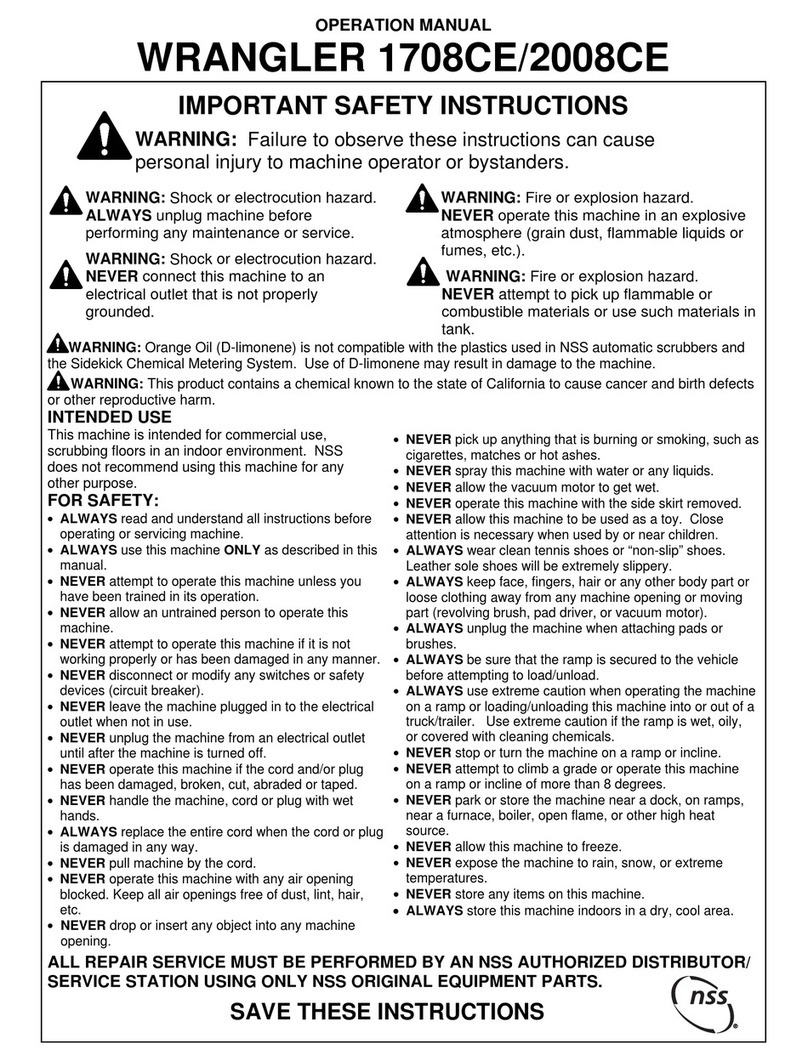
NSS
NSS WRANGLER 1708CE User manual
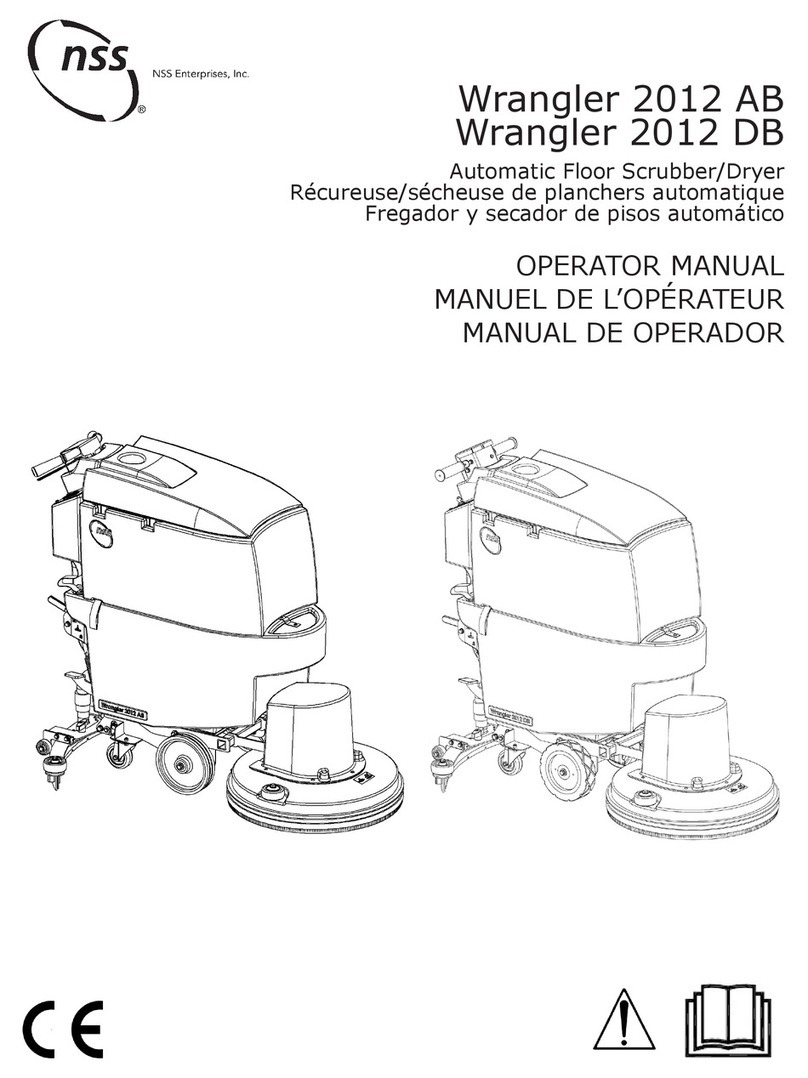
NSS
NSS Wrangler 2012 AB User manual
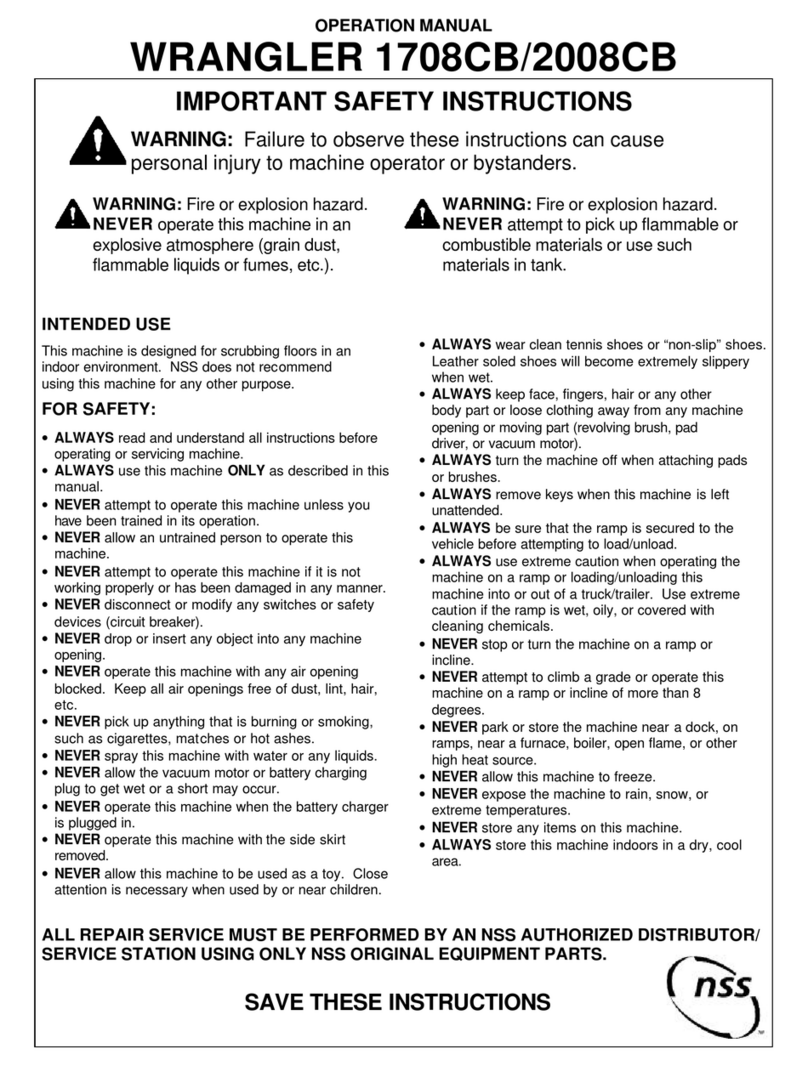
NSS
NSS WRANGLER 1708CB User manual
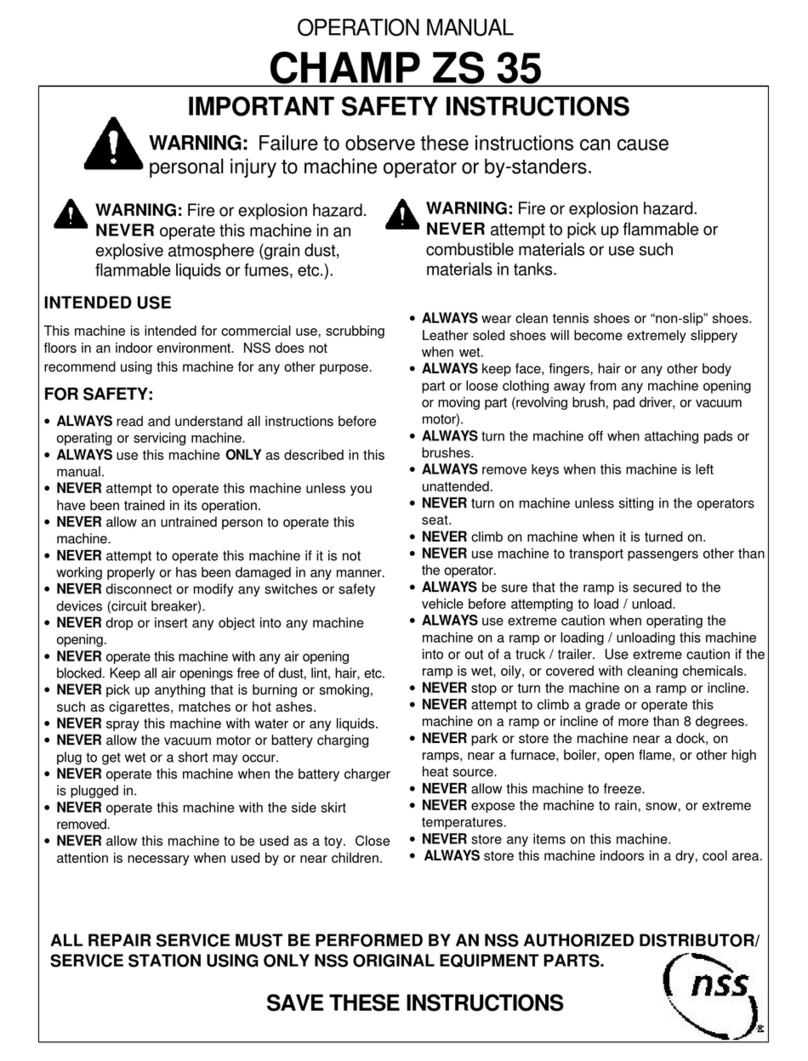
NSS
NSS CHAMP ZS 35 User manual
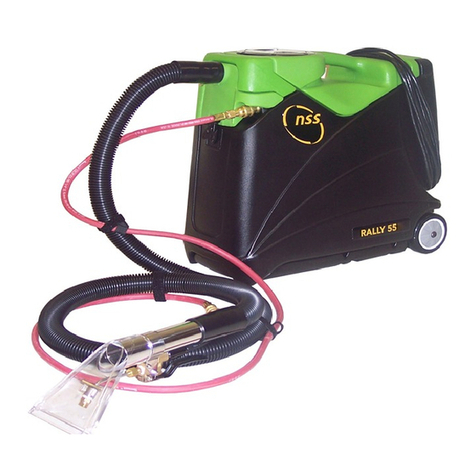
NSS
NSS Rally 55 User manual

NSS
NSS eForce 26 User manual
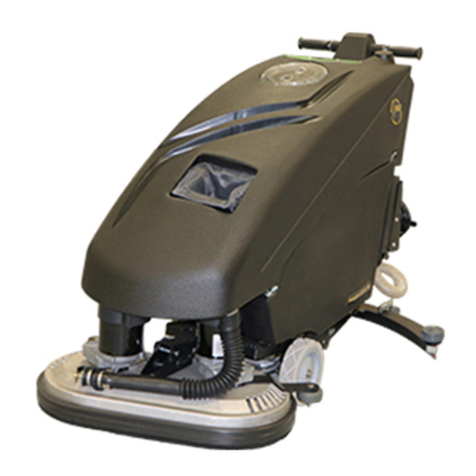
NSS
NSS WRANGLER 2616 DB User manual
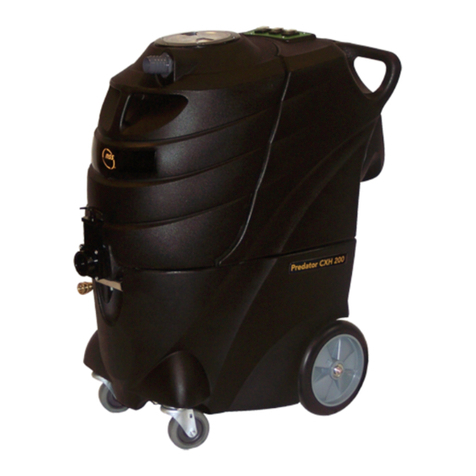
NSS
NSS CXC 200 User manual
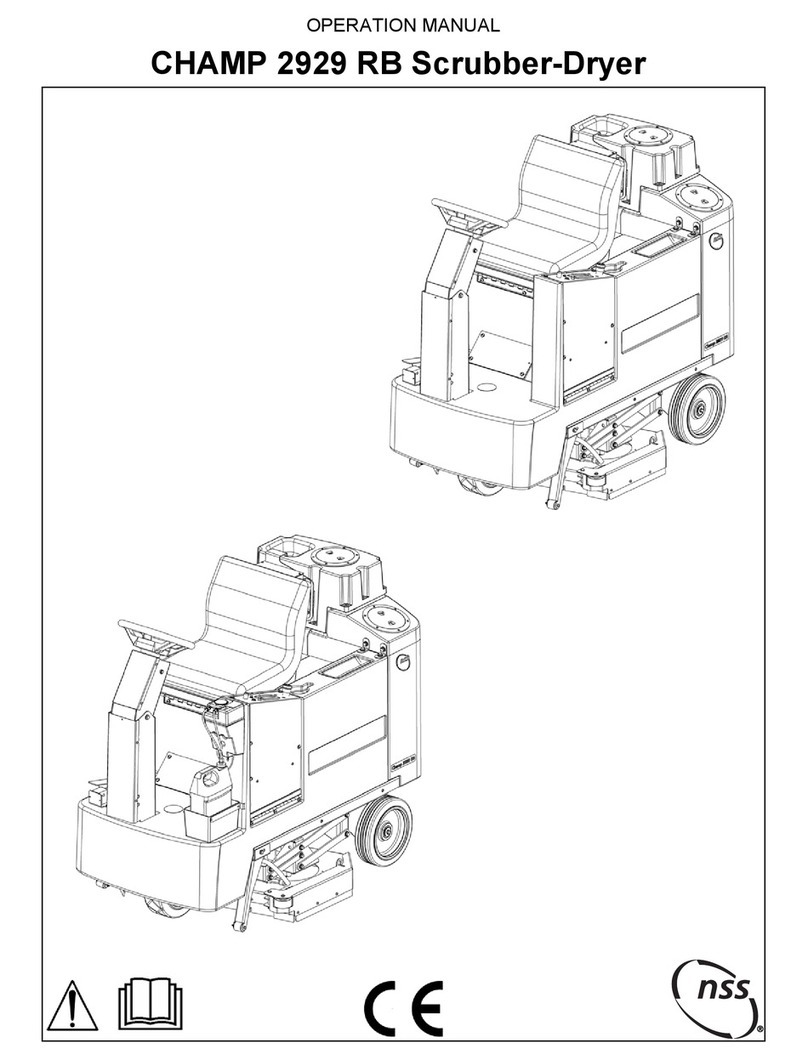
NSS
NSS champ 2929 rb User manual
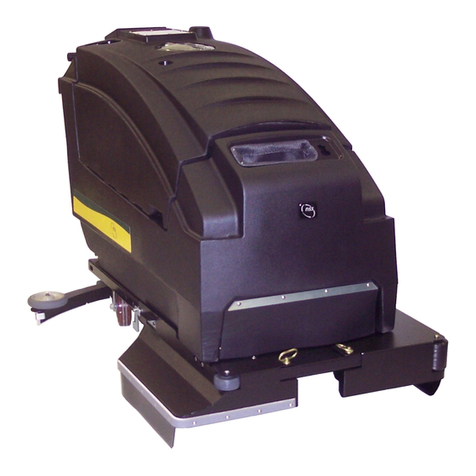
NSS
NSS Wrangler 3330 DB User manual
Popular Scrubber manuals by other brands
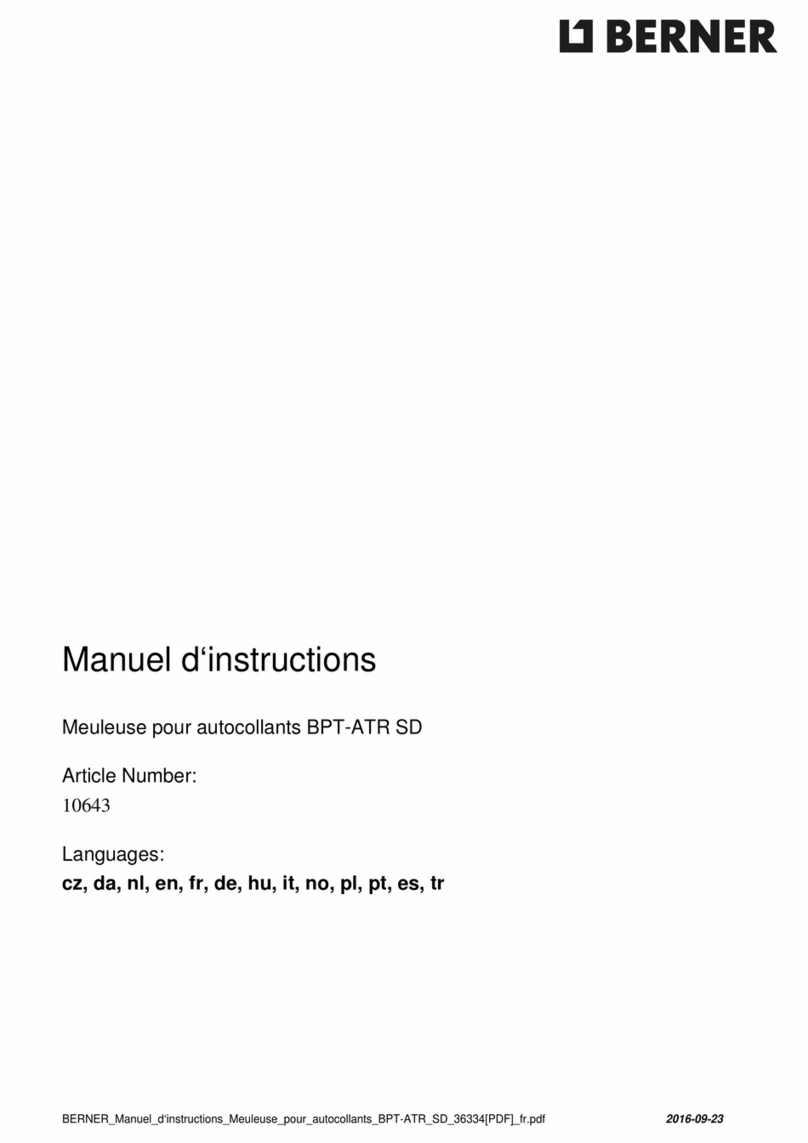
Berner
Berner BPT-ATR Instruction manual/safety instruction
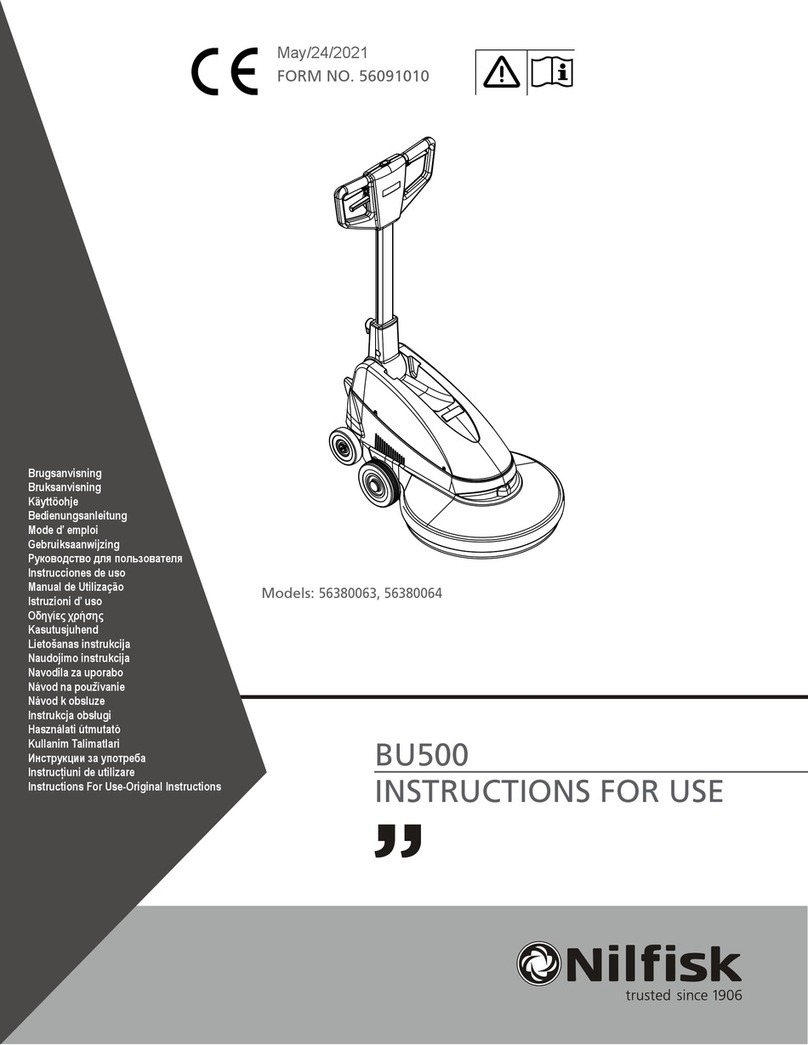
Nilfisk-Advance
Nilfisk-Advance Spintec 551 UH Instructions for use

Black & Decker
Black & Decker ScumBuster xtreme instruction manual
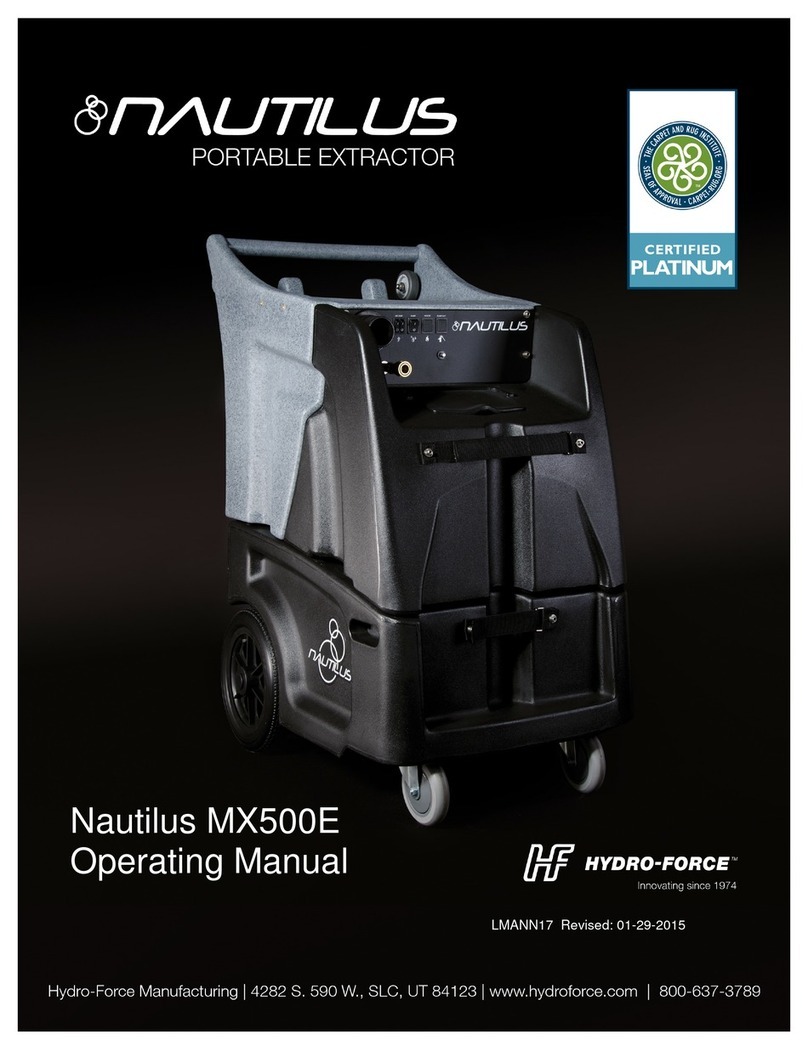
Hydro-Force
Hydro-Force Nautilus MX500E operating manual
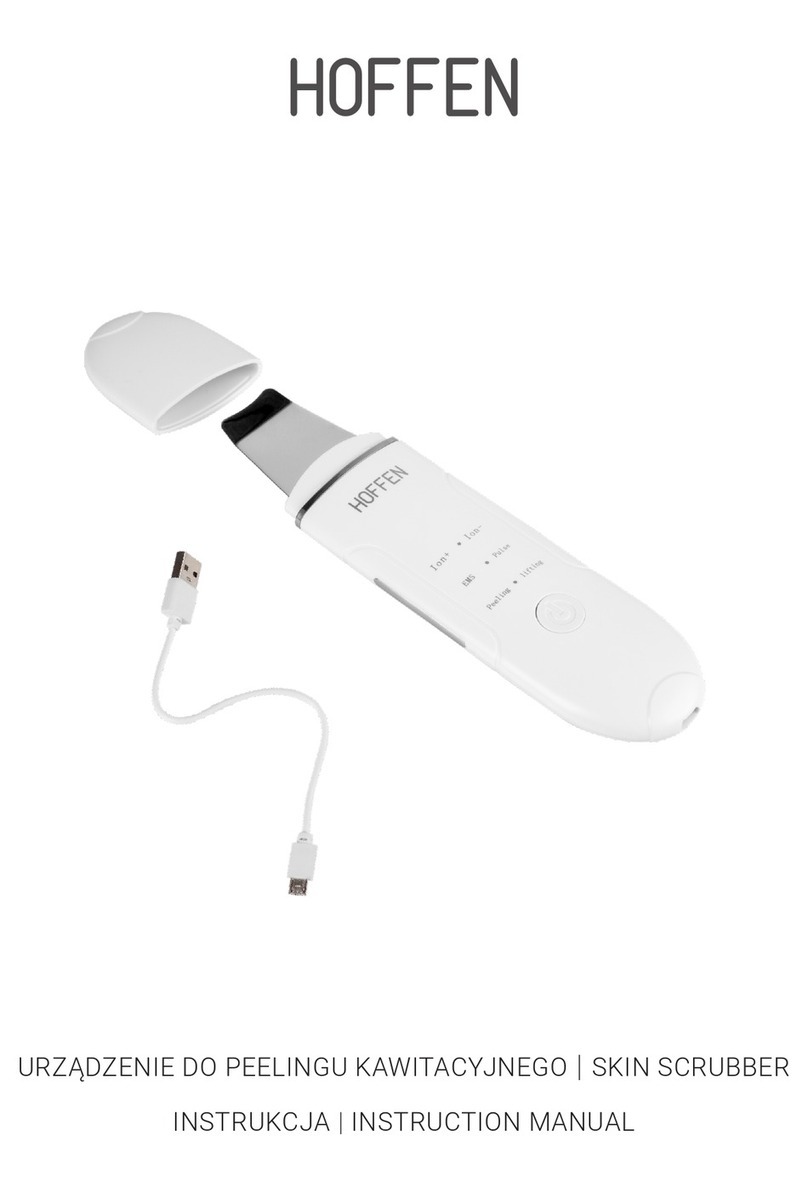
HOFFEN
HOFFEN SS-1311 instruction manual

Advance acoustic
Advance acoustic Warrior ST 56315036 Instructions for use
